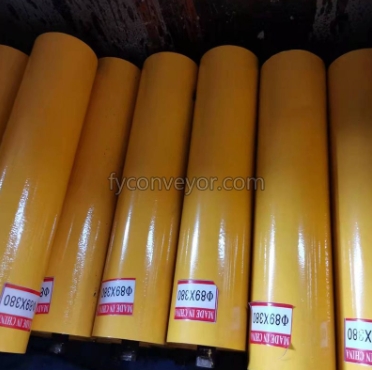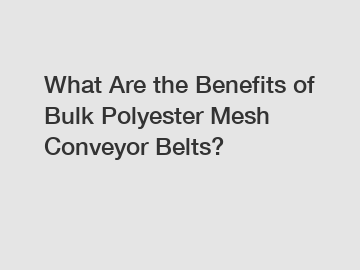How many types of conveyor rollers are there?
Jan. 26, 2024
How many types of conveyor rollers are there?
The world of conveyor systems is diverse, and conveyor rollers play a pivotal role in their functionality. To address the question directly, there are several types of conveyor rollers, each designed for specific applications and industries. This article aims to explore the variety of conveyor rollers, shedding light on their characteristics, applications, and the impact they have on the efficiency of material handling systems.
Understanding the Diversity of Conveyor Rollers
Conveyor rollers are not one-size-fits-all; they come in various types to cater to the specific needs of different industries. The primary types include gravity rollers, powered rollers, sprocketed rollers, tapered rollers, and idler rollers. Each type serves a unique purpose, contributing to the seamless movement of materials in conveyor systems.
The Logic Behind Different Types
The differentiation in conveyor roller types arises from the specific requirements of material handling tasks. Gravity rollers, for instance, rely on the force of gravity for movement, making them ideal for decline or incline conveyor sections. Powered rollers, on the other hand, use external power sources to facilitate movement, offering greater control over the conveyor system.
Applications and Industries
Featured content:Production Process and Precautions of Butyl Rubber Stoppers
What is Single-Phase Immersed Dielectric Coolant?
Exploring the Diversity of Rubber Stoppers in Pharmaceuticals
How to Apply High Tack Self Adhesive Vinyl
10 Questions You Should Know about Slurry Pump Selection
The Advantages of Implementing Copper Electrical Connectors for High-Voltage Systems
Key Questions to Ask When Choosing the Best Four Steel Wire Spiral Hose for Hydraulic R12
The application of conveyor rollers spans a wide range of industries, including manufacturing, distribution, and logistics. Gravity rollers are commonly used in assembly lines and warehouses for simple material transport, while powered rollers find applications in scenarios where precise control and speed are essential. Sprocketed rollers are favored in chain-driven conveyor systems, providing efficient and reliable power transmission.
Efficiency and Cost-Effectiveness
The significance of understanding the variety of conveyor rollers lies in optimizing the efficiency and cost-effectiveness of material handling processes. Selecting the right type of roller for a specific application ensures smooth and reliable conveyor operation. This, in turn, contributes to increased productivity, reduced downtime, and overall cost savings for businesses relying on conveyor systems.
Impact on Material Handling Systems
The choice of conveyor rollers directly influences the performance of material handling systems. Well-suited rollers enhance the overall efficiency of conveyor belts, minimizing the risk of jams, misalignments, and disruptions. This, in the long run, translates to improved workflow, reduced maintenance costs, and a more streamlined material handling process.
In conclusion, the world of conveyor rollers is rich in diversity, offering solutions tailored to the unique needs of various industries. Understanding the different types of conveyor rollers is paramount for businesses aiming to optimize their material handling systems. By making informed choices based on the specific requirements of each application, industries can harness the efficiency and cost-effectiveness that the right conveyor rollers bring to their operations.
2024 Guide to Stainless Steel Corrugated Expansion Joint for Water Treatment System
Top 5 Benefits of Silane Coupling Agents in Industrial Applications
Top 5 Uses for Fabric-Braided Hose in 2024
Ultimate Guide to 1250CFM Polyester Mesh Cloth
HVAC Hoses & Fittings: Ultimate Guide to Choosing & Installing
How to choose the best HDPE wall panels?
What Are Polyurethane Quarries Panels and Their Benefits?
214
0
0
None
None
Related Articles
-
58
0
0
-
74
0
0
-
How Does OEM Single Fiber Braid Hose Enhance Hydraulic Performance?
How Does OEM Single Fiber Braid Hose Enhance Hydraulic Performance?
69
0
0
-
47
0
0
-
70
0
0
-
81
0
0
-
How Can Wire Braided Hoses Enhance Steam Efficiency and Safety?
## How Can Wire Braided Hoses Enhance Steam Efficiency and Safety?
75
0
0
-
What are the benefits of flat polyester mesh cloth?
Durability and StrengthFlat polyester mesh cloth is renowned for its exceptional durability.
69
0
0











Comments
All Comments (0)